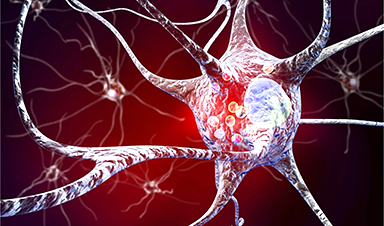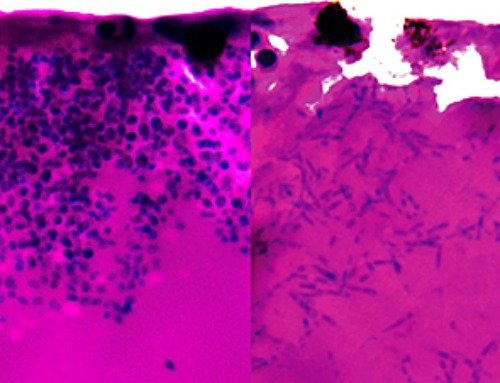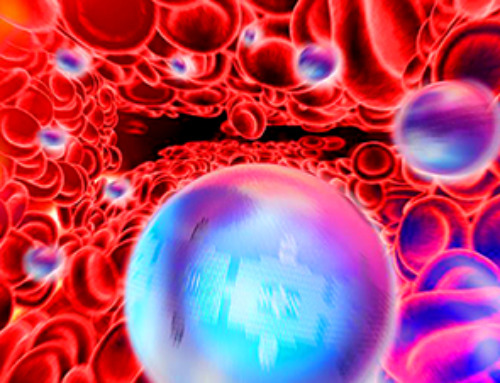Scientists propose a new model for classifying Parkinson's.
The complexity of Parkinson's disease poses significant challenges in developing effective treatments. This complexity stems from various causes, including genetics and environmental factors, coupled with the broad spectrum of symptoms that patients may experience, which can vary greatly in severity. Additionally, the diagnosis of Parkinson's often occurs late, sometimes a decade or more after the disease has begun to affect the brain.
In a paper published in The Lancet Neurology, a group of scientists argue that this complexity demands a new way of classifying the disease for research purposes, one based not on clinical diagnosis but biology. The authors have called their biological model "SynNeurGe."
The Components of SynNeurGe
The "Syn" stands for alpha-synuclein, a protein that in most Parkinson's patients causes abnormal deposits called Lewy bodies. Abnormalities in synuclein identify and probably cause degenerative changes in the brain that can impact movement, thinking, behavior, and mood.
"Neur" stands for neurodegeneration. This is the breakdown of the function of neurons in the brain. In doctor's offices, specific neurons in the dopamine system are the way that Parkinson's is diagnosed. In the SynNeurGe model, however, neurodegeneration in all areas of the brain are included in the classification.
The "Ge" stands for genetics. The role of genetics in Parkinson's is complex. Mutations in many different genes have been found to predispose someone to the disease. The likelihood of developing Parkinson's disease depends on the gene involved, the specific mutation within the gene, and environmental exposures.
Advancing Research and Treatment
The authors argue that for research purposes, patients should be classified by the presence or absence of these three factors. This would allow the identification of Parkinson's patients before symptoms appear, and aid the development of treatments tailored to patients' unique biology. Right now, patients are diagnosed based on symptoms and signs, even though the disease may have been present in their brains for many years. By shifting classification criteria, researchers can identify disease earlier (even before people may experience symptoms), and target specific patient groups that have more in common with each other biologically, giving drug development a higher chance of success.
"Although this is still for research purposes, this is a major shift in thinking," says Dr. Ron Postuma, a clinician-scientist at The Neuro (Montreal Neurological Institute-Hospital) of McGill University and one of the study's authors. "If you think of it, it's quite unusual that we've had to wait until Parkinson's patients have important symptoms before we could make a diagnosis. We don't wait for someone to feel pain from cancer before we diagnose it. Instead, we detect and diagnose it, hopefully, before someone is aware of any symptoms. This research classification is a critical step towards bringing our thinking about Parkinson's into the 21st century."
Reference: "A biological classification of Parkinson's disease: the SynNeurGe research diagnostic criteria" by Günter U Höglinger, Charles H Adler, Daniela Berg, Christine Klein, Tiago F Outeiro, Werner Poewe, Ronald Postuma, A Jon Stoessl and Anthony E Lang, February 2024, The Lancet Neurology.
DOI: 10.1016/S1474-4422(23)00404-0
The study was funded by the Canada Foundation for Innovation, the Michael J. Fox Foundation for Parkinson's Research, the Canadian Institutes of Health Research, Fonds de Recherche du Quebec–Santé, the Weston-Garfield Foundation, the Parkinson Society of Canada, the Webster Foundation, and the National Institute of Health.
News
AI Helped Scientists Stop a Virus With One Tiny Change
Using AI, researchers identified one tiny molecular interaction that viruses need to infect cells. Disrupting it stopped the virus before infection could begin. Washington State University scientists have uncovered a method to interfere with a key [...]
Deadly Hospital Fungus May Finally Have a Weakness
A deadly, drug-resistant hospital fungus may finally have a weakness—and scientists think they’ve found it. Researchers have identified a genetic process that could open the door to new treatments for a dangerous fungal infection [...]
Fever-Proof Bird Flu Variant Could Fuel the Next Pandemic
Bird flu viruses present a significant risk to humans because they can continue replicating at temperatures higher than a typical fever. Fever is one of the body’s main tools for slowing or stopping viral [...]
What could the future of nanoscience look like?
Society has a lot to thank for nanoscience. From improved health monitoring to reducing the size of electronics, scientists’ ability to delve deeper and better understand chemistry at the nanoscale has opened up numerous [...]
Scientists Melt Cancer’s Hidden “Power Hubs” and Stop Tumor Growth
Researchers discovered that in a rare kidney cancer, RNA builds droplet-like hubs that act as growth control centers inside tumor cells. By engineering a molecular switch to dissolve these hubs, they were able to halt cancer [...]
Platelet-inspired nanoparticles could improve treatment of inflammatory diseases
Scientists have developed platelet-inspired nanoparticles that deliver anti-inflammatory drugs directly to brain-computer interface implants, doubling their effectiveness. Scientists have found a way to improve the performance of brain-computer interface (BCI) electrodes by delivering anti-inflammatory drugs directly [...]
After 150 years, a new chapter in cancer therapy is finally beginning
For decades, researchers have been looking for ways to destroy cancer cells in a targeted manner without further weakening the body. But for many patients whose immune system is severely impaired by chemotherapy or radiation, [...]
Older chemical libraries show promise for fighting resistant strains of COVID-19 virus
SARS‑CoV‑2, the virus that causes COVID-19, continues to mutate, with some newer strains becoming less responsive to current antiviral treatments like Paxlovid. Now, University of California San Diego scientists and an international team of [...]
Lower doses of immunotherapy for skin cancer give better results, study suggests
According to a new study, lower doses of approved immunotherapy for malignant melanoma can give better results against tumors, while reducing side effects. This is reported by researchers at Karolinska Institutet in the Journal of the National [...]
Researchers highlight five pathways through which microplastics can harm the brain
Microplastics could be fueling neurodegenerative diseases like Alzheimer's and Parkinson's, with a new study highlighting five ways microplastics can trigger inflammation and damage in the brain. More than 57 million people live with dementia, [...]
Tiny Metal Nanodots Obliterate Cancer Cells While Largely Sparing Healthy Tissue
Scientists have developed tiny metal-oxide particles that push cancer cells past their stress limits while sparing healthy tissue. An international team led by RMIT University has developed tiny particles called nanodots, crafted from a metallic compound, [...]
Gold Nanoclusters Could Supercharge Quantum Computers
Researchers found that gold “super atoms” can behave like the atoms in top-tier quantum systems—only far easier to scale. These tiny clusters can be customized at the molecular level, offering a powerful, tunable foundation [...]
A single shot of HPV vaccine may be enough to fight cervical cancer, study finds
WASHINGTON -- A single HPV vaccination appears just as effective as two doses at preventing the viral infection that causes cervical cancer, researchers reported Wednesday. HPV, or human papillomavirus, is very common and spread [...]
New technique overcomes technological barrier in 3D brain imaging
Scientists at the Swiss Light Source SLS have succeeded in mapping a piece of brain tissue in 3D at unprecedented resolution using X-rays, non-destructively. The breakthrough overcomes a long-standing technological barrier that had limited [...]
Scientists Uncover Hidden Blood Pattern in Long COVID
Researchers found persistent microclot and NET structures in Long COVID blood that may explain long-lasting symptoms. Researchers examining Long COVID have identified a structural connection between circulating microclots and neutrophil extracellular traps (NETs). The [...]
This Cellular Trick Helps Cancer Spread, but Could Also Stop It
Groups of normal cbiells can sense far into their surroundings, helping explain cancer cell migration. Understanding this ability could lead to new ways to limit tumor spread. The tale of the princess and the [...]





















